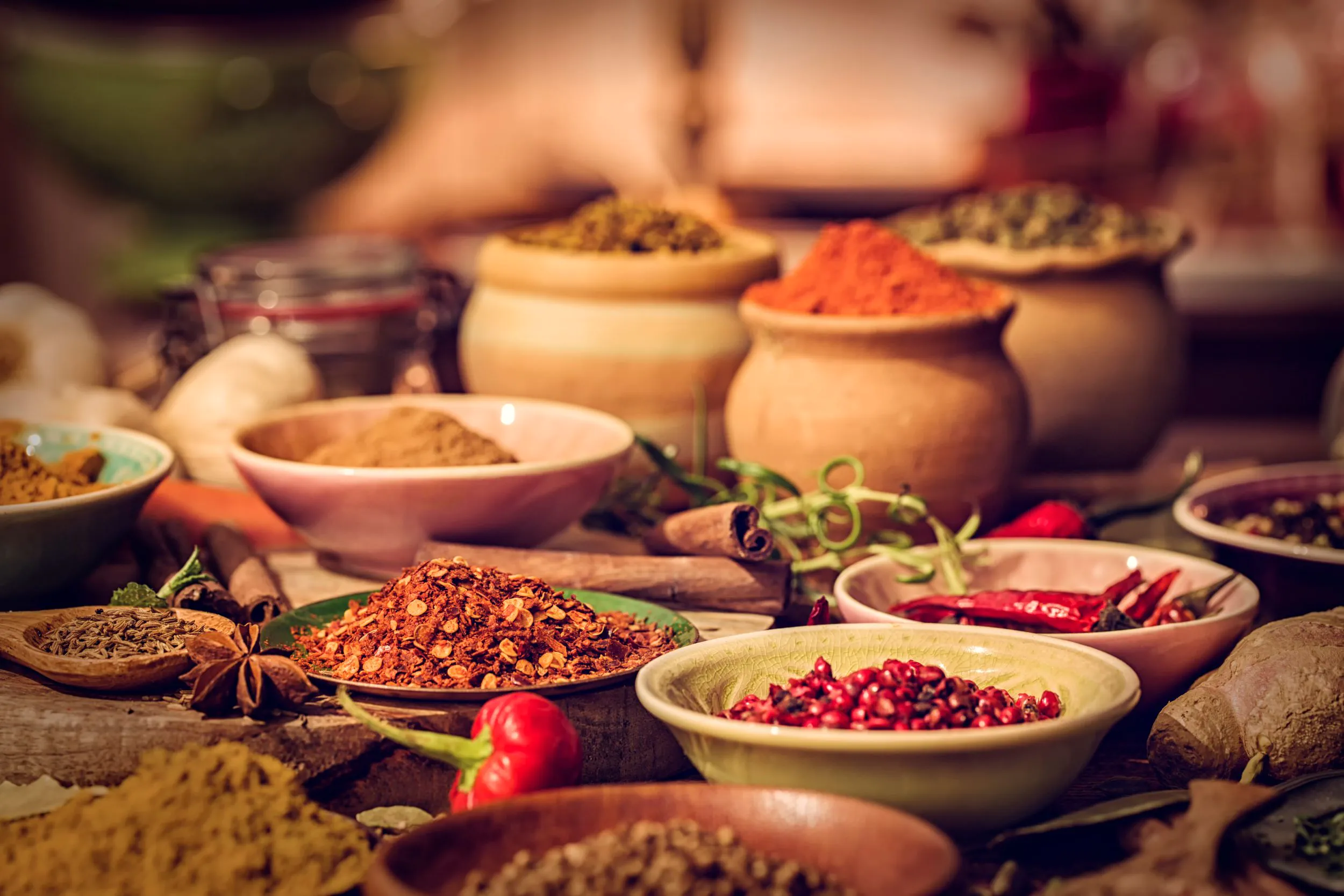Seasonings and spices are essential ingredients to countless dishes in cuisines around the world. To some extent they will always be in demand due to their ubiquity. Like many others, the seasonings and spices industry took a hit during the pandemic due to supply chain disruptions, lockdowns, and other issues, but has been seeing growth in recent years. While the market continues to face some challenges due to rising costs, it is still expected to grow over the next several years.
Seasonings and Spices Industry Overview
The global seasonings and spices industry was worth over $37 billion in 2022 and is expected to grow at a compound annual growth rate (CAGR) of 5.6% by 2030. Over the years, people have been cooking and buying a wider variety of cuisines from countries and cultures different from their own, helping to build demand for a greater range of spices that may not be used in their native dishes. Pepper, cinnamon, and turmeric are the most-used spices in the world, though there are several others that see widespread use across regions. The ones thought to have the most growth potential include ginger, cloves, peppercorns, and allspice.
There is also a growing concern around health foods and alternative medicines, and many herbs are either proven or believed to have medicinal benefits. The pandemic has increased interest in health and in alternative treatments, which is contributing to greater demand for some products in the seasons and spices industry. Some examples of herbs and spices that are considered to provide health benefits are ginger, garlic, turmeric, and basil.
Putting aside any functional properties, seasonings and spices are still often considered healthy. Consumers are increasingly seeking out “clean” foods with organic ingredients and few chemicals and additives. Seasonings and spices often provide flavor without adding substances that are viewed as unhealthy, such as sugar and fat.
While the COVID-19 pandemic brought lockdowns, restrictions, labor shortages, and supply chain disruptions, it also induced people to cook at home more than before. Demand from restaurants fell as people isolated at home, but when customers began to return to restaurants some continued cooking as well. These habits are also encouraged by the growing focus on health and wellness, as home-cooked meals offer greater control over ingredients and healthiness than frozen or restaurant meals do, and typically cost less than dining out. This increased interest in cooking is helping to bolster sales of seasonings and spices.
Asia-Pacific is the largest and fastest-growing region for the global seasonings and spices industry. It accounted for close to 38% of the market in 2022, driven by factors such as a rising middle-class population, an increased number of domestic brands, and greater marketing and promotional activities. Asia-Pacific is also a key exporter of herbs and spices, with India, Vietnam, China, and Thailand being home to many products that are consumed around the world.
Challenges in the Spice Industry
Spice traders in the region have been facing challenges this year, however. Transportation, energy, and other costs of living have been rising over the past few years, impacting both sellers and their customers. Freight costs from China to Europe, for example, rose to five times higher in mid-2022 than they were before the pandemic. Though they had fallen again by the end of the year, they remained more than double what they were before 2020.
The industry is also facing shortages of fertilizers and raw spices, which contribute to higher prices at a time when many consumers find their budgets stretched. It can also be difficult to procure spices that meet standards of fair trade, organic, and high quality, which are becoming increasingly popular on the market. All of this means that many producers are facing narrower margins combined with lower sales. While it is easier for large companies to swallow these costs, small independent producers can be hit harder, and may benefit from joining together into co-operatives and other types of partnerships in order to survive market challenges.
A New Initiative to Support Production
Elsewhere in the world, however, the US has launched a project to help revitalize Jamaica’s spice industry. The US Department of Agriculture (USDA) is sponsoring the Food for Progress Jamaica Spices project, a five-year effort that will support 7,500 local people involved in the farming of spices. It aims to improve the quality of ginger, turmeric, and allspice products, thereby increasing their trade internationally. The project will introduce climate-resilient farming systems that will increase yields in a sustainable manner and help the country modernize its agricultural sector while supporting marginalized people and other local farmers.



